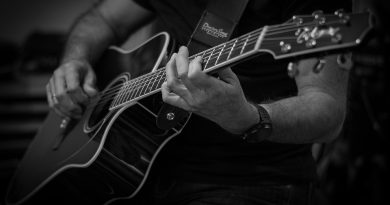Unlocking the Magic of Folk Chord Voicings: A Guide for Guitarists
Unlocking the Magic of Folk Chord Voicings: A Guide for Guitarists
As a guitarist, incorporating folk chord voicings into your playing can open up a whole new world of sounds and textures. By mastering the art of folk chord voicings, you can add depth and richness to your playing, creating a unique and captivating sound. In this guide, we will explore the basics of folk chord voicings, how to incorporate them into your playing, and offer tips and tricks to help you unlock the magic of this versatile style.
Understanding Folk Chord Voicings
Folk chord voicings are a unique way of playing chords on the guitar that are commonly found in folk music. These voicings often include open strings, fingerpicking patterns, and unique chord shapes that create a warm and inviting sound. Unlike traditional chord shapes, folk chord voicings are often more open and airy, allowing each note to ring out clearly and harmoniously.
To start incorporating folk chord voicings into your playing, it is important to first understand the basics of guitar tuning and chord construction. Folk music often utilizes open tunings, such as DADGAD or Open D, which can change the way chords are formed and played on the guitar. By familiarizing yourself with these open tunings and experimenting with different chord shapes, you can begin to unlock the magic of folk chord voicings.
Incorporating Folk Chord Voicings into Your Playing
Once you have a good grasp of the basics of folk chord voicings, it is time to start incorporating them into your playing. One common technique used in folk music is fingerpicking, which involves plucking individual strings to create intricate and melodic patterns. By combining fingerpicking with unique chord shapes and open tunings, you can create a lush and dynamic sound that is characteristic of folk music.
Another key element of folk chord voicings is the use of open strings. Open strings can be used to create harmonies and add depth to your chords, allowing each note to ring out and blend together seamlessly. Experimenting with different ways to incorporate open strings into your chord voicings can help you create a rich and resonant sound that is sure to captivate your audience.
Tips and Tricks for Mastering Folk Chord Voicings
To truly master the art of folk chord voicings, it is important to practice regularly and experiment with different chord shapes and fingerpicking patterns. Here are some tips and tricks to help you unlock the magic of folk chord voicings:
1. Experiment with different open tunings: Open tunings, such as DADGAD or Open D, can dramatically change the way chords are formed and played on the guitar. By experimenting with different open tunings, you can discover new chord shapes and voicings that will add depth and richness to your playing.
2. Focus on precision and clarity: When playing folk chord voicings, it is important to focus on precision and clarity. Make sure to practice each chord shape slowly and carefully, paying attention to the placement of your fingers and the sound of each note. This will help you develop a clean and articulate playing style that is essential for mastering folk chord voicings.
3. Learn from the masters: Take the time to listen to and study the playing of expert folk guitarists, such as Nick Drake, Joni Mitchell, and Bert Jansch. Pay attention to their chord voicings, fingerpicking patterns, and overall playing style, and try to incorporate some of their techniques into your own playing. By studying the masters, you can gain valuable insights and inspiration that will help you unlock the magic of folk chord voicings.
4. Experiment with different dynamics and textures: One of the key components of folk music is its dynamic range and use of texture. Experiment with different dynamics and textures in your playing, such as soft fingerpicking or aggressive strumming, to create a diverse and captivating sound. By exploring different ways to vary your playing, you can add depth and emotion to your music that will enchant your listeners.
In conclusion, mastering the art of folk chord voicings can add a whole new dimension to your playing as a guitarist. By understanding the basics of folk chord voicings, incorporating them into your playing, and following these tips and tricks, you can unlock the magic of this versatile style and create captivating and enchanting music that is sure to impress your audience. So grab your guitar, experiment with different chord shapes and fingerpicking patterns, and let the magic of folk chord voicings transform your playing.






